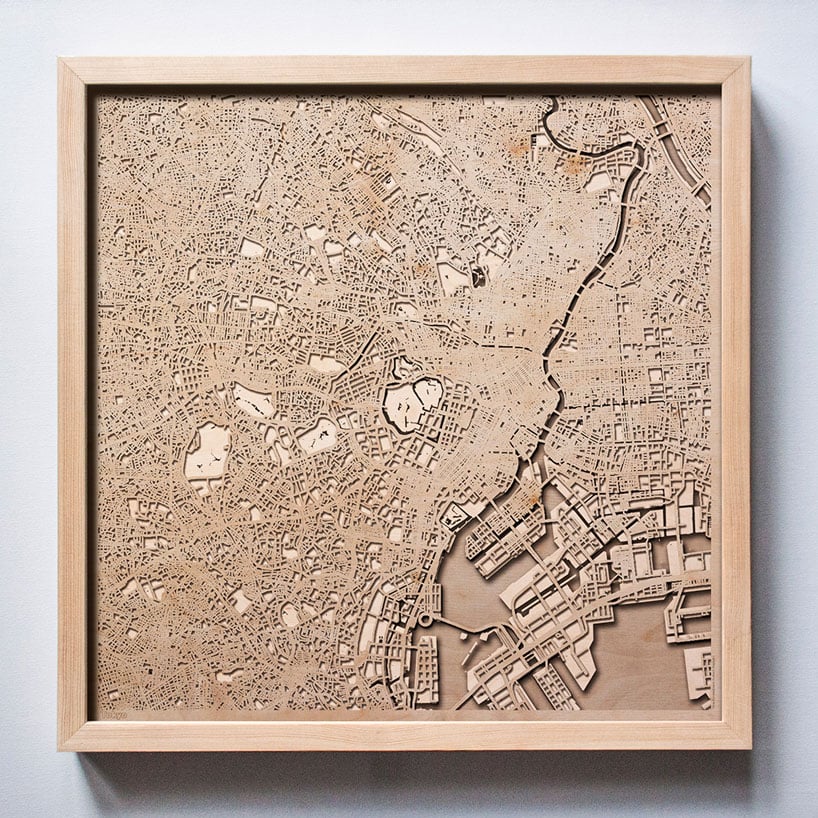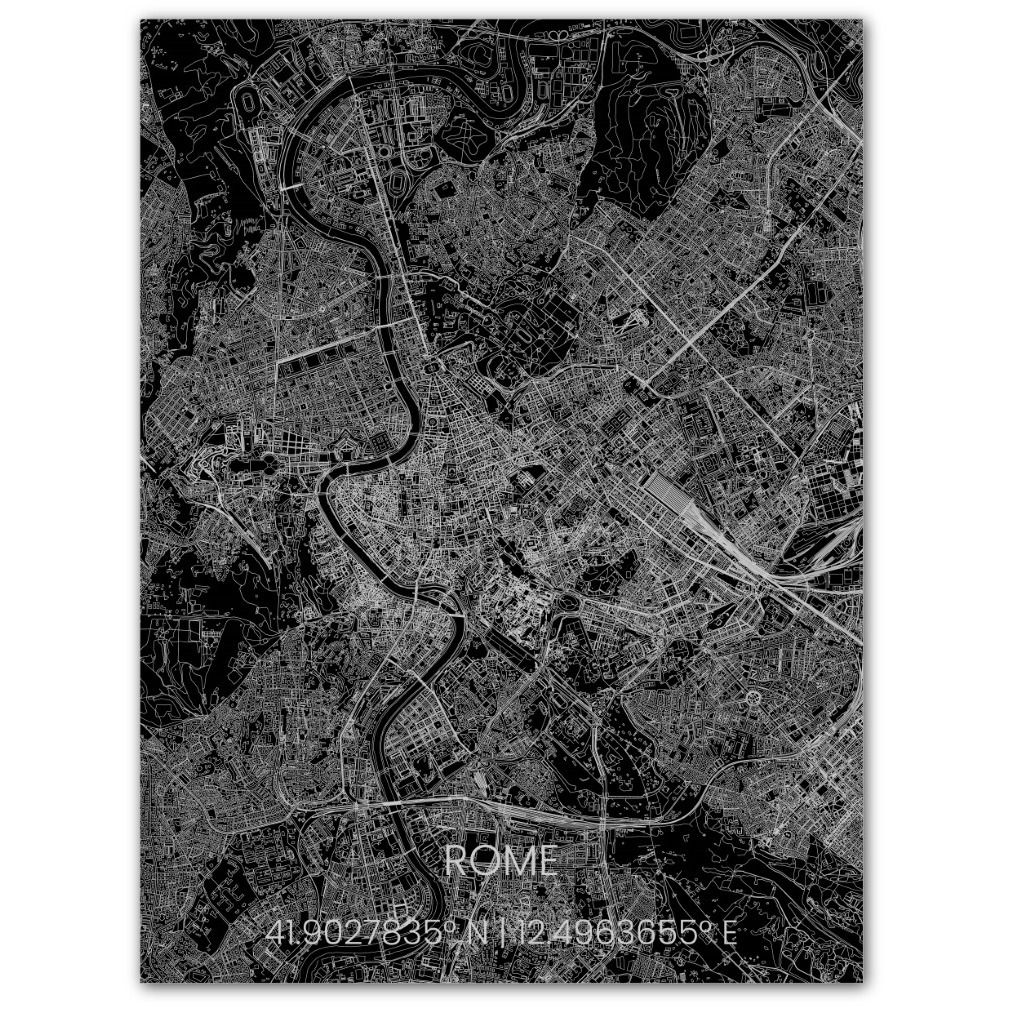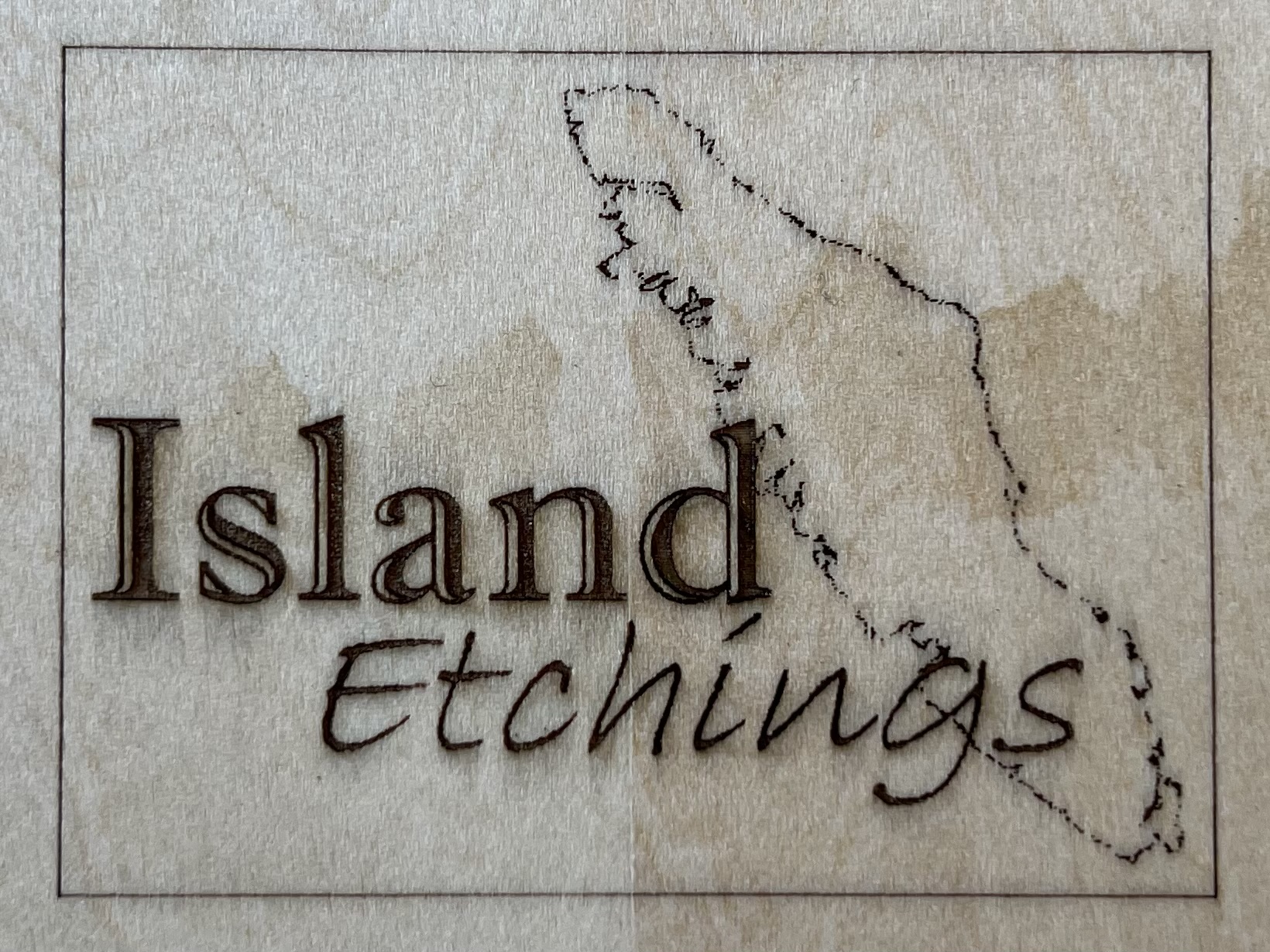Your cart is currently empty!

Unveiling the Artistry: Exploring the Beauty of Laser Engraved Maps
Imagine holding in your hands a piece of art that not only captivates your eyes but also tells a story. A work of craftsmanship that seamlessly blends intricate detail, precision, and innovation. Welcome to the world of laser engraved maps, where geography is transformed into a breathtaking visual experience. In this blog post, we will embark on a journey to unveil the artistry behind laser engraved maps and explore the profound beauty they possess. Laser engraving technology has revolutionized the way we appreciate and interact with maps. Gone are the days of traditional cartography, where maps were mere tools for navigation. Today, laser engraving breathes life into these once two-dimensional pieces of paper, elevating them to extraordinary works of art. Every line, contour, and landmark is meticulously etched onto various materials, such as wood, metal, or acrylic, creating a stunning representation of our world. What makes laser engraved maps truly captivating is the fusion of art and technology. As the laser beam delicately carves its way through the material, it captures even the finest details, reproducing them with astonishing precision. Mountains rise majestically, rivers meander gracefully, and cities pulsate with life. With each stroke of the laser, the map’s contours come alive, telling a story of the land it represents. Moreover, laser engraved maps offer a unique perspective that traditional maps cannot achieve. The play of light and shadow on the engraved surface adds depth and dimension, allowing the map to transform depending on the viewing angle. It’s as if the landscape is breathing, inviting you to get lost in its intricacies.
The Evolution of Cartography: From Tools to Art
Cartography, the science and art of mapmaking, has come a long way since its humble beginnings. What started as a practical tool for navigation has now evolved into a form of artistic expression. Laser engraving technology has played a significant role in this evolution, allowing maps to transcend their utilitarian purpose and become objects of beauty.
In the past, cartographers relied on manual techniques to create maps. They painstakingly drew each line and symbol by hand, often using specialized tools like compasses and rulers. These maps served as essential tools for explorers, navigators, and military strategists.
However, with the advent of laser engraving technology, the process of mapmaking underwent a revolution. Laser engravers use high-powered lasers to etch intricate designs onto various materials such as wood, metal, or acrylic. This precise and efficient method allows for the creation of highly detailed maps with incredible accuracy.
Unleashing the Power of Laser Engraving Technology
Laser engraving technology has unlocked new possibilities in map design and production. The precision and versatility of lasers enable cartographers to capture even the most intricate details of landscapes, cities, and landmarks.
One of the key advantages of laser engraving is its ability to reproduce topographic features with exceptional accuracy. Mountains rise realistically from the surface of the map, valleys are carved out with precision, and rivers flow seamlessly across the landscape. This level of detail not only enhances the aesthetic appeal but also provides valuable information for hikers, geologists, and environmental scientists.
Besides topography, laser engraving can also capture cultural landmarks such as buildings or monuments. From iconic structures like the Eiffel Tower to ancient temples in far-flung corners of the world, laser engraved maps showcase the rich architectural heritage of different regions.
The Intricate Process of Creating Laser Engraved Maps
Creating a laser engraved map is a meticulous and intricate process that requires both technical expertise and artistic vision. It begins with selecting the right base material, which can range from natural wood to sleek metal or transparent acrylic.
Once the material is chosen, the cartographer prepares the digital design file. This file contains all the necessary information for the laser engraving machine to create the map. The level of detail, scale, and specific features are carefully considered during this stage.
Next comes the actual engraving process. The laser engraving machine uses a high-powered laser beam to remove layers of material according to the design specifications. The intensity and speed of the laser can be adjusted to achieve different effects, such as varying depths or shades.
After the engraving is complete, additional finishing touches may be applied to enhance the overall appearance of the map. This can include sanding, staining, or painting certain areas to add depth and contrast.
Materials that Bring Maps to Life

Laser engraved maps can be created on various materials, each offering its unique aesthetic qualities and characteristics. Let’s explore some of these materials:
Wood:
Wooden maps exude warmth and natural beauty. The grain patterns in different types of wood add texture and depth to the engraved design. Popular choices include oak, walnut, cherry, or birch.
Metal:
Metal maps have a sleek and modern appeal. Stainless steel or aluminum are commonly used for their durability and ability to withstand outdoor conditions.
Acrylic:
Transparent acrylic maps create a contemporary look, allowing light to pass through and create stunning visual effects. They are often used for displaying coastal regions or underwater topography.
By carefully selecting the material, cartographers can enhance the overall aesthetic of the laser engraved map and create a unique visual experience for the viewer.
Capturing the Essence: The Artistic Design of Laser Engraved Maps
While laser engraving technology provides the means to create highly detailed maps, it is the artistic design that truly brings them to life. Cartographers have embraced this medium as a way to express their creativity and showcase their unique style.
The design process involves carefully considering various elements such as color palette, typography, and composition. Each decision contributes to the overall mood and visual impact of the map.
Color selection plays a crucial role in setting the tone of the map. Vibrant hues can evoke a sense of energy and excitement, while muted tones create a more serene atmosphere. The choice of colors also helps differentiate between different features on the map, making it easier for viewers to interpret the information presented.
Typography is another important aspect of map design. The font style and size should be legible yet harmonious with the overall aesthetic. Cartographers often choose fonts that reflect the historical or cultural context of the region being depicted.
Composition refers to how different elements are arranged within the map’s design. It involves finding a balance between showcasing key features while maintaining an aesthetically pleasing layout. Composition techniques such as symmetry, asymmetry, or focal points help guide viewers’ eyes across the map and highlight its most significant aspects.
From Flat to Three-Dimensional: Adding Depth and Dimension
Laser engraved maps have transcended traditional two-dimensional representations by incorporating three-dimensional elements into their designs. This innovative approach adds depth and dimension, creating a more immersive experience for the viewer.
One technique used to achieve this effect is the layering of materials. By engraving different layers at varying depths, cartographers can create a sense of depth in the map. Mountains and valleys appear more realistic, while bodies of water gain a sense of movement.
Another method involves using shading techniques to simulate light and shadow. By carefully controlling the intensity and direction of the laser beam, cartographers can create gradients that give the illusion of elevation or depth.
The combination of these techniques results in laser engraved maps that not only provide geographical information but also evoke an emotional response from viewers. The landscapes come alive, inviting exploration and igniting a sense of wonder.
Showcasing Nature’s Beauty: Engraving Landscapes and Landmarks
Nature has always been a source of inspiration for artists, and laser engraved maps are no exception. From majestic mountain ranges to serene coastlines, these maps celebrate the beauty and diversity found in our natural world.
Laser engraving technology allows cartographers to capture the intricate details of landscapes with astonishing precision. Every contour, ridge, and peak is faithfully reproduced on the map’s surface. This level of detail not only showcases nature’s grandeur but also provides valuable information for outdoor enthusiasts.
In addition to landscapes, laser engraved maps often feature iconic landmarks that hold cultural or historical significance. These landmarks serve as focal points within the map’s design, drawing attention and adding visual interest.
Exploring the World: Engraving Maps of Different Regions
Laser engraved maps offer endless possibilities when it comes to exploring different regions around the world. Whether it’s showcasing a specific country or highlighting an entire continent, these maps provide a unique perspective on our planet.
Cartographers can choose to focus on specific regions known for their natural beauty, cultural heritage, or historical significance. For example, a laser engraved map of Italy might highlight famous cities like Rome, Florence, and Venice, along with iconic landmarks such as the Colosseum or the Leaning Tower of Pisa.
Alternatively, a map of Africa could showcase its diverse wildlife and national parks. Laser engraving technology allows for intricate details like the Serengeti’s vast plains or the majestic Victoria Falls to be accurately represented.
By exploring different regions through laser engraved maps, viewers can gain a deeper appreciation for the world’s diversity and inspire their own wanderlust.
Customization and Personalization: Making Laser Engraved Maps Unique
One of the most significant advantages of laser engraved maps is their ability to be customized and personalized. Whether it’s adding a special message or highlighting a specific location, these maps can be tailored to individual preferences.
For example, individuals may choose to have their favorite quote or meaningful coordinates engraved on the map. This personal touch adds sentimental value and transforms the map into a cherished keepsake.
In addition to personalization options, laser engraved maps also offer customization in terms of size and framing. They can be created in various dimensions to suit different spaces or preferences. Framing options range from rustic wooden frames that complement natural landscapes to sleek modern frames that enhance contemporary interiors.
Beyond Maps: Utilizing Laser Engraving in Other Art Forms
Laser engraving technology has not only revolutionized mapmaking but has also found applications in other art forms. Artists and designers have embraced this versatile tool to create unique pieces that push boundaries and challenge traditional notions of art.
Sculptures:
Laser engraving can be used to create intricate patterns or designs on three-dimensional objects, such as sculptures. The precision of the laser allows for detailed engravings on various materials, including wood, metal, or even glass.
Home Decor:
Laser engraved maps have found their way into home decor items such as wall art, coasters, or cutting boards. These functional pieces not only serve a practical purpose but also add a touch of elegance and sophistication to any space.
Jewelry:
Delicate engravings on jewelry pieces have become increasingly popular. From pendants to cufflinks, laser engraving adds a personal and meaningful touch to these accessories.
The Growing Popularity of Laser Engraved Maps: From Collectors to Gift Seekers
Laser engraved maps have gained significant popularity in recent years. Their unique combination of artistry and functionality has captivated a wide range of individuals, from collectors to gift seekers.
Collectors are drawn to the exquisite craftsmanship and attention to detail that laser engraved maps offer. Each map is a testament to the cartographer’s skill and creativity, making it a valuable addition to any collection.
Gift seekers are attracted to the personalized nature of laser engraved maps. Whether it’s for a wedding, anniversary, or housewarming gift, these maps provide a thoughtful and unique present that will be cherished for years to come.
Preserving History: Laser Engraved Maps as Historical Keepsakes
In addition to their aesthetic appeal, laser engraved maps also serve as historical keepsakes. They capture significant moments in time and preserve them for future generations.
Historical events such as explorations or conquests can be immortalized through laser engraved maps. These maps not only depict geographical information but also provide insights into the political, social, and cultural context of a particular era.
Furthermore, laser engraved maps can be used to document changes in landscapes over time. They serve as a visual record of how cities have grown, how coastlines have shifted, or how natural disasters have shaped the land.
The Future of Laser Engraved Maps: Innovations and Possibilities
The future of laser engraved maps is filled with exciting possibilities. As technology continues to advance, so too will the capabilities of laser engraving machines.
One area that holds promise is the integration of augmented reality (AR) into laser engraved maps. AR technology allows for interactive experiences where viewers can explore additional information or even simulate real-world scenarios on top of the map’s surface.
Another potential development is the use of advanced materials for laser engraving. Researchers are exploring new options such as biodegradable materials or even organic compounds that could further expand the range of possibilities in map design.
Conclusion: The Timeless Beauty and Significance of Laser Engraved Maps
Laser engraved maps have transformed cartography from a practical tool to an art form. Through their intricate designs and attention to detail, these maps capture both the beauty and significance of our world.
By combining technology with artistic vision, cartographers have created pieces that not only provide geographical information but also evoke emotions and tell stories. Laser engraved maps invite us to explore our planet’s diverse landscapes, celebrate its cultural heritage, and preserve its history for generations to come.

